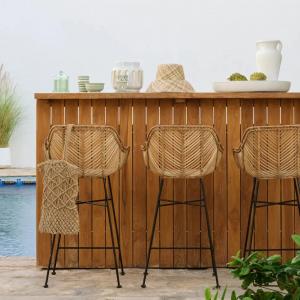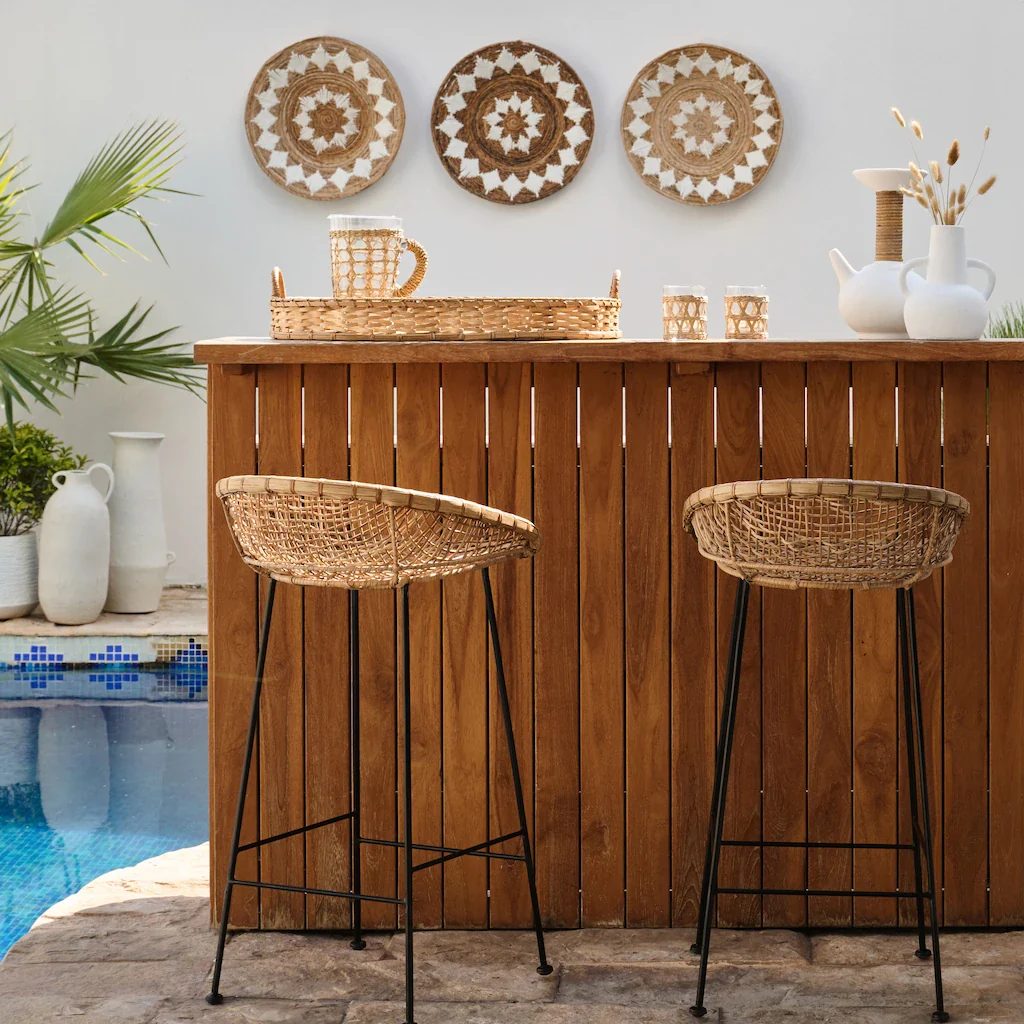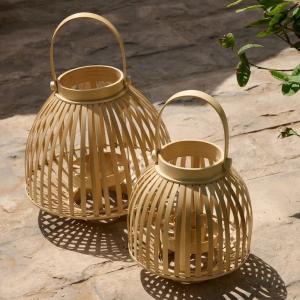Outdoor Rattan Bar Stools and Sustainable Outdoor Furniture in Dubai
Wicker Outdoor Bar Stools: Elevate Your Dubai Patio with Elegant Bar Furniture
DUBAI, AL MANARA, UNITED ARAB EMIRATES, November 12, 2025 /EINPresswire.com/ -- Over the past two decades, Dubai has transformed from a city defined by glass towers into a metropolis that values outdoor living as an essential part of daily life. Terraces overlooking the Burj Khalifa, balconies with sea views, and landscaped gardens have become natural extensions of indoor spaces. Residents and designers alike now treat open-air areas as integral parts of the home, not just for relaxation but as functional and social environments. This cultural shift has influenced the way people think about furniture, materials, and overall outdoor design.Outdoor furniture in Dubai is no longer chosen simply for its practicality but also for its ability to contribute to the character of the space. The concept of design has expanded beyond the walls of the interior, leading to a growing appreciation for materials that merge visual elegance with resilience. Among them, the outdoor rattan bar stool stands out as an enduring choice — combining organic texture, comfort, and adaptability to the region’s demanding weather conditions.
Wicker and Natural Rattan: A Connection Between Tradition and Modernity
Wicker and Natural rattan have a long-standing history in furniture design, often associated with tropical regions and artisanal craftsmanship. In Dubai, their appeal lies in the balance between traditional techniques and modern design language. The woven structure of rattan introduces lightness, texture, and natural ventilation, allowing air to circulate freely — a vital feature in an environment where heat can reach extreme levels.
The versatility of Natural rattan enables it to blend into a wide range of architectural settings, from bohemian terraces with terracotta tiles to sleek urban rooftops featuring minimalist concrete and glass. The subtle variations in the weave create dynamic light reflections, producing visual depth without adding heaviness to the design. Because the texture of rattan feels both tactile and breathable, it supports comfort during long hours outdoors, even in the hottest months of the year.
Material Qualities and Climate Adaptation
The qualities that make Natural rattan so suitable for Dubai’s climate come from its organic structure. Rattan is a vine native to tropical forests in Southeast Asia, valued for its strength, flexibility, and durability. For outdoor use, the material undergoes specialized treatment processes that improve its resistance to humidity, salt, and ultraviolet light. In a coastal desert city like Dubai, these adaptations ensure that the furniture maintains its integrity across seasons.
During the humid months from November to March, moisture levels can rise significantly. Properly coated rattan does not swell or deform when exposed to high humidity, preserving its shape and structure. In the summer heat, it remains cooler to the touch compared to metal or plastic, creating a comfortable surface even under direct sunlight. This natural temperature regulation is one of the reasons the outdoor rattan bar stool is considered ideal for open-air environments.
Rattan’s fibers naturally expand and contract in response to temperature shifts, which prevents cracking or brittleness. The combination of flexibility and strength means that the material adapts rather than resists the environment. As a result, furniture made from rattan maintains both its aesthetic and structural qualities with minimal upkeep.
Craftsmanship and Structure
While rattan benefits from modern treatments, its true character is defined by craftsmanship. The making of a Natural rattan bar stool involves a combination of manual weaving and structural assembly. Skilled artisans weave each strand by hand, paying close attention to the distribution of tension and the rhythm of the pattern. This precision ensures that the surface remains both supportive and flexible, providing a level of comfort that machine-made alternatives cannot replicate.
Beneath the woven surface, most stools incorporate a discreet metal frame made of aluminum or stainless steel. The frame provides strength and stability while being resistant to corrosion. The rattan is carefully wrapped and secured around this framework, creating a seamless connection between natural and engineered elements. The resulting furniture is light yet stable, capable of withstanding the wind, salt air, and daily temperature changes typical of Dubai’s outdoor conditions.
The visual identity of the weave can vary — some designs emphasize geometric precision, while others highlight the organic irregularities of the material. Each pattern has its own logic, from simple diagonals to intricate interlacing. This diversity allows designers to select models that correspond to the overall atmosphere of the space, whether relaxed and coastal or structured and urban.
Designing for Comfort and Function
The proportions of a bar stool are crucial for both visual balance and comfort. A typical outdoor counter or bar in Dubai’s residential terraces stands between 105 and 110 centimeters in height, while the outdoor rattan bar stool seat usually measures around 75 to 80 centimeters from the ground. This proportion ensures ergonomic alignment, giving users enough legroom and a comfortable sitting posture.
For slightly lower counters or kitchen islands, a stool height of about 60 to 65 centimeters is ideal. These details, while small, make a significant difference in everyday comfort. They also influence how people interact in the space — taller bar stools create a more social and dynamic setting, while counter-height seating feels more relaxed and suitable for family use.
The tactile qualities of Natural rattan contribute to a sense of comfort beyond mere measurements. Unlike metal or hard plastic, rattan has a slight elasticity that adjusts subtly under the body’s weight. This flexibility allows for longer sitting periods without the stiffness that often comes with harder materials.
Colors, Textures, and Visual Harmony
Color plays an essential role in shaping the atmosphere of outdoor areas. Light hues such as sand, ivory, and beige reflect sunlight, keeping furniture cooler and visually enlarging compact spaces like balconies. Darker tones, such as charcoal or espresso, create a more grounded effect and contrast beautifully with light stone floors or concrete surfaces.
Natural rattan possesses a distinctive honey-brown tone that harmonizes easily with surrounding greenery or terracotta. Its surface texture enhances the connection between indoor and outdoor environments, creating continuity rather than contrast. Two-tone designs, where darker frames are paired with lighter weaving, emphasize structure and add visual rhythm to terraces and patios.
In Dubai, where architecture often combines modern lines with natural materials, rattan serves as a bridge between the built and the organic. It complements minimalist spaces as easily as it enhances bohemian or Mediterranean-inspired settings.
Creating an Outdoor Environment
Designing an outdoor bar area involves more than selecting furniture. The surrounding details define how the space will feel and function. Comfortable cushions made from water-repellent fabrics improve the usability of outdoor rattan bar stools, offering additional softness and color accents. Proper outdoor lighting extends the functionality of the terrace into the evening hours, creating a sense of intimacy and warmth. Pendant lamps above the counter, subtle LED strips along the base, and string lights overhead all help to shape the atmosphere.
Outdoor rugs also play an important role. They define boundaries, anchor furniture, and soften the transition between flooring materials. In Dubai’s climate, synthetic fiber rugs such as polypropylene perform well because they resist fading, moisture, and mold. Their texture also adds comfort underfoot and creates a visual layer that ties the furniture arrangement together.
Plants further enhance the sense of liveliness. Succulents, small palms, and aromatic herbs like mint and rosemary thrive in warm conditions and require minimal maintenance. Combined with woven furniture, they contribute to a balanced and natural composition, making the outdoor area feel connected to the landscape rather than separate from it.
Sustainability and Durability
In contemporary Dubai, sustainability is becoming a guiding principle in design and lifestyle. The use of Natural rattan supports this trend because it is a renewable material harvested from rapidly regenerating vines. Its cultivation has a relatively low environmental impact compared to the production of synthetic alternatives. When furniture lasts for a decade or longer, the environmental benefits multiply, as fewer resources are consumed for replacements.
Durability also has a social dimension. Long-lasting materials encourage maintenance and care rather than disposal, fostering a culture of responsibility toward possessions. In addition, the minimal upkeep required for rattan furniture — occasional cleaning with mild soap and water — reduces dependence on chemical products. This simplicity aligns with Dubai’s broader sustainability initiatives aimed at minimizing waste and emissions.
When placed within this ecological framework, the outdoor rattan bar stool represents more than a functional object; it becomes part of a larger effort to create living environments that balance human comfort with environmental awareness.
Integration with Architecture and Urban Context
Dubai’s architecture is characterized by openness and transparency — large glass facades, continuous terraces, and flowing spatial connections between inside and outside. Furniture made from Natural rattan supports this aesthetic by maintaining visual lightness and permeability. It does not obstruct the view or dominate the setting but integrates harmoniously with its surroundings.
In apartment balconies, where space is limited, lightweight rattan furniture allows flexibility. The stools can be rearranged easily depending on the number of guests or the time of day. In larger villas and garden areas, the same material helps create unity between shaded seating zones, pools, and dining areas.
The adaptability of Natural rattan also makes it suitable for commercial environments. Restaurants, beach clubs, and rooftop bars in Dubai frequently use woven furniture for its resistance to humidity and ease of maintenance. Over time, this has created a recognizable aesthetic language associated with relaxed sophistication and natural simplicity.
Maintenance and Preservation
To extend the life of outdoor rattan bar stools, a few practical habits are sufficient. Regular dusting prevents particles from accumulating in the weave, and gentle cleaning with water maintains the surface’s natural sheen. During prolonged periods of non-use, protective covers can shield furniture from direct sun exposure, especially in midsummer.
While Natural rattan is treated for UV resistance, gradual fading can occur over several years, giving the material a patina that many users find appealing. Unlike synthetic surfaces, which deteriorate abruptly, rattan ages gracefully, acquiring character rather than losing value.
By approaching care as part of the living process, owners participate in maintaining the balance between natural and built environments — a theme that increasingly defines modern outdoor living in the UAE.
The Broader Perspective: Outdoor Aesthetics and Lifestyle in Dubai
Outdoor spaces in Dubai express a distinctive cultural dialogue between modernity and nature. The city’s climate encourages outdoor living for much of the year, and this has shaped a unique design approach emphasizing comfort, shade, and airflow. Furniture such as the outdoor rattan bar stool embodies this balance. Its structure allows for ventilation, its form promotes relaxation, and its material reflects both environmental awareness and aesthetic restraint.
The growing popularity of Outdoor rugs, woven lighting fixtures, and Natural rattan seating reflects a global movement toward materials that are tactile, sustainable, and visually calming. Dubai’s outdoor design culture integrates these influences into its own language — one that values both innovation and heritage.
In this sense, outdoor furniture becomes part of a broader narrative. It reflects the city’s ambition to harmonize modern design with natural beauty, offering residents and visitors alike spaces that feel connected, breathable, and enduring.
The evolution of Dubai’s terraces, balconies, and gardens shows that luxury today is defined less by opulence and more by balance — between comfort and simplicity, technology and craftsmanship, nature and architecture. The outdoor rattan bar stool, together with other elements like Outdoor rugs, represents this transformation. It stands as a symbol of how thoughtful design and natural materials can shape the rhythm of daily life in one of the world’s most dynamic cities.
Carol Sukkar
Home and Soul Furniture Trading LLC
+971 56 112 1444
email us here
Visit us on social media:
LinkedIn
Instagram
Facebook
X
Legal Disclaimer:
EIN Presswire provides this news content "as is" without warranty of any kind. We do not accept any responsibility or liability for the accuracy, content, images, videos, licenses, completeness, legality, or reliability of the information contained in this article. If you have any complaints or copyright issues related to this article, kindly contact the author above.



